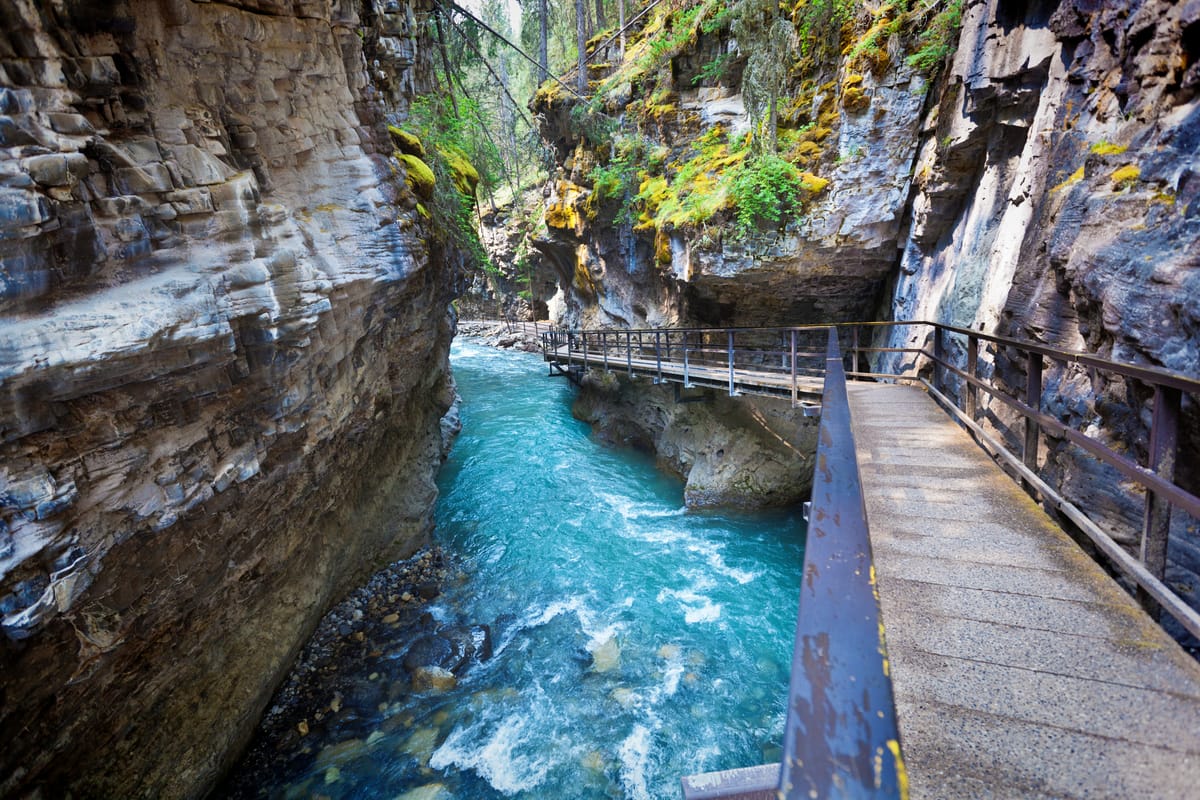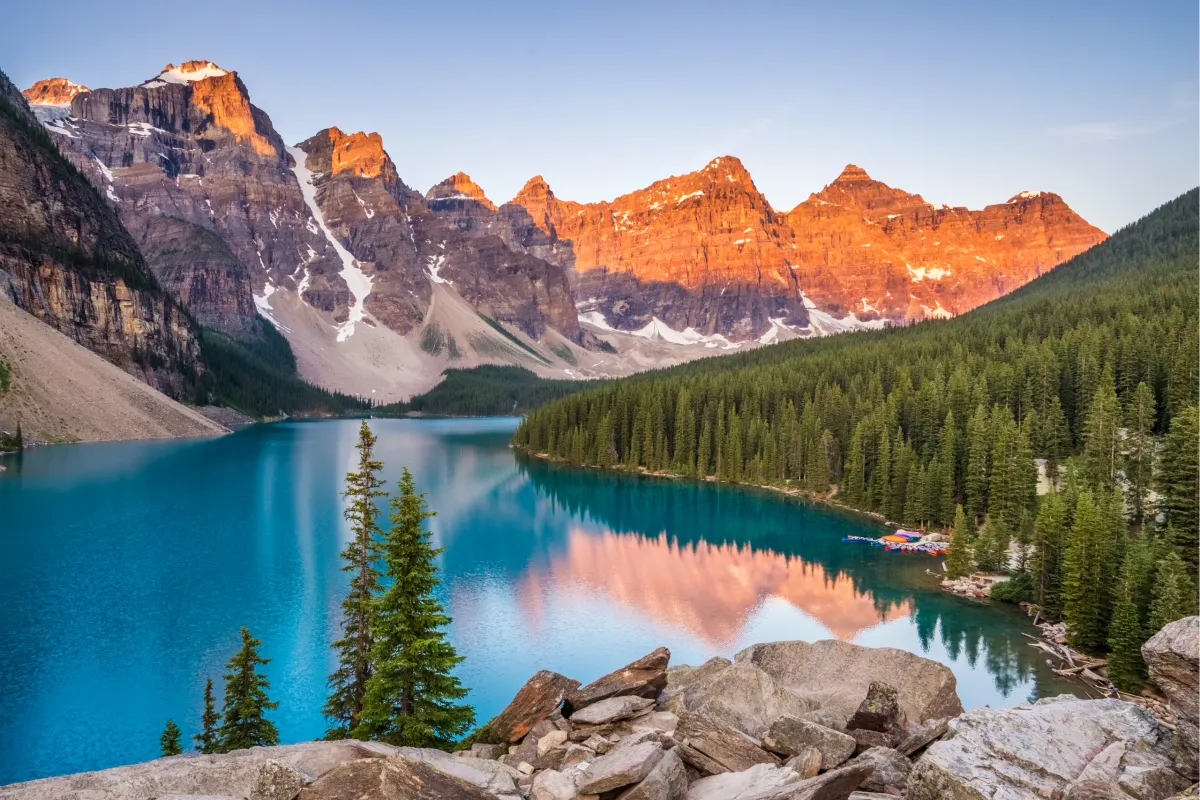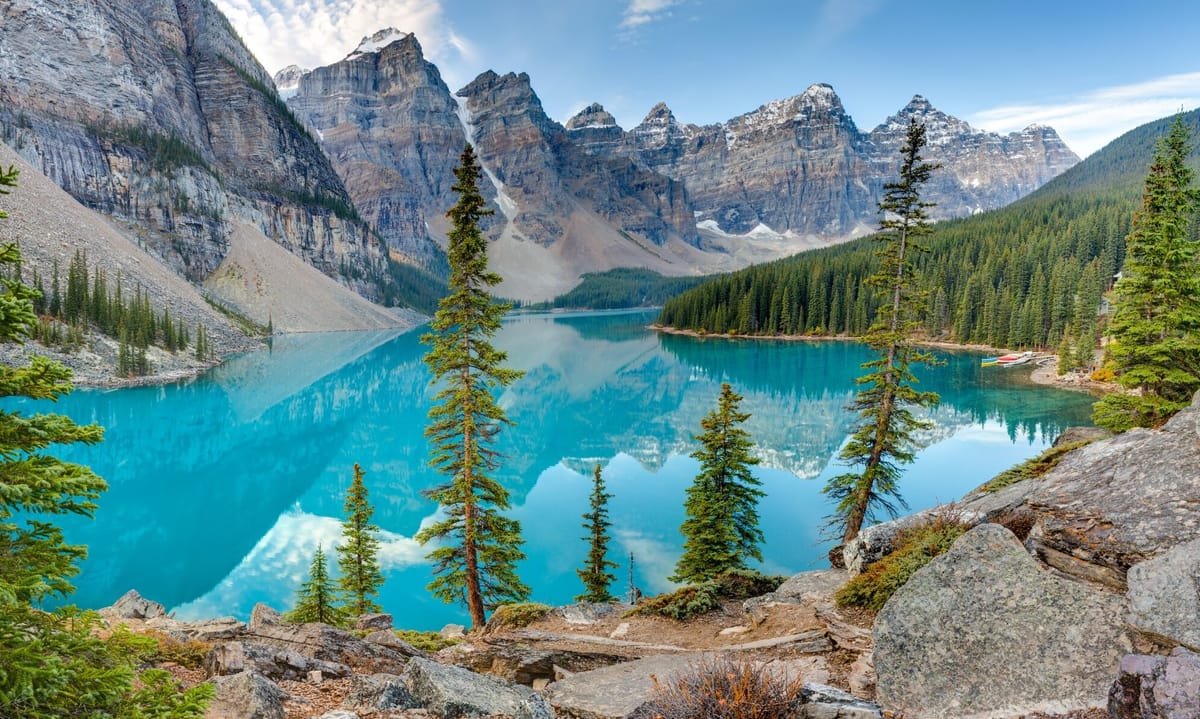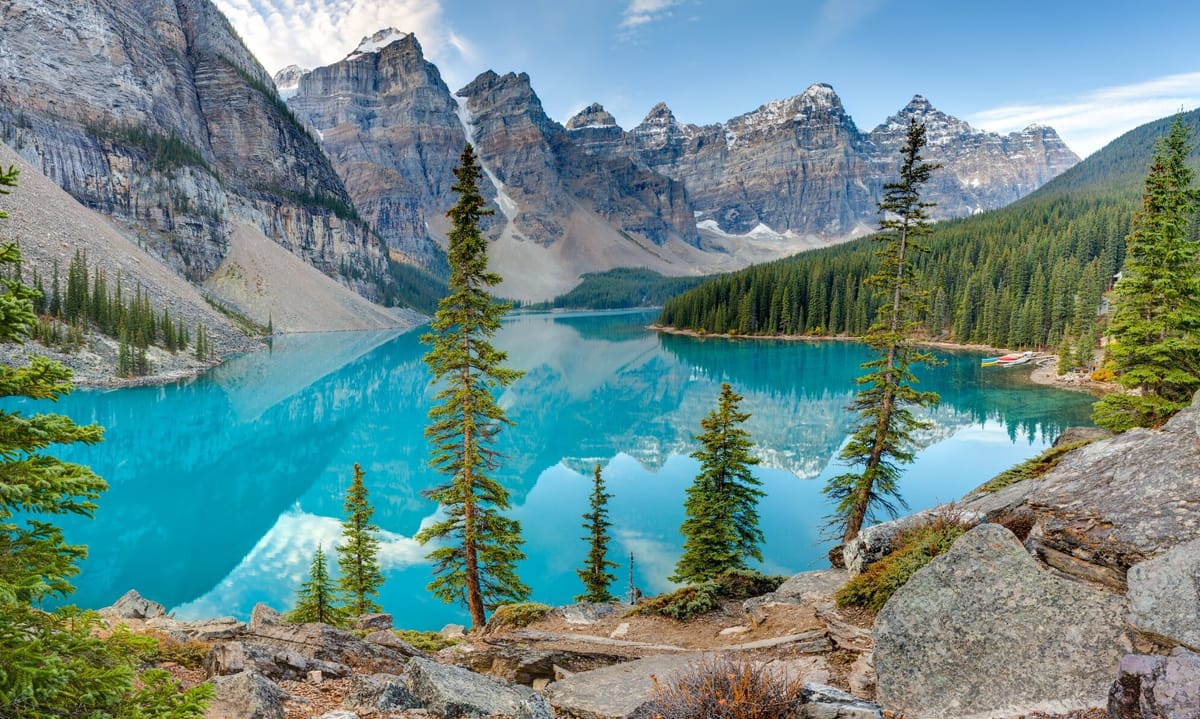Animals Inside Banff National Park and How to See Them Safely
Many animals call Banff National Park home—from grizzly bears and elk to bald eagles and bluebirds. Explore where and when to see them, plus safety tips for ethical wildlife viewing.
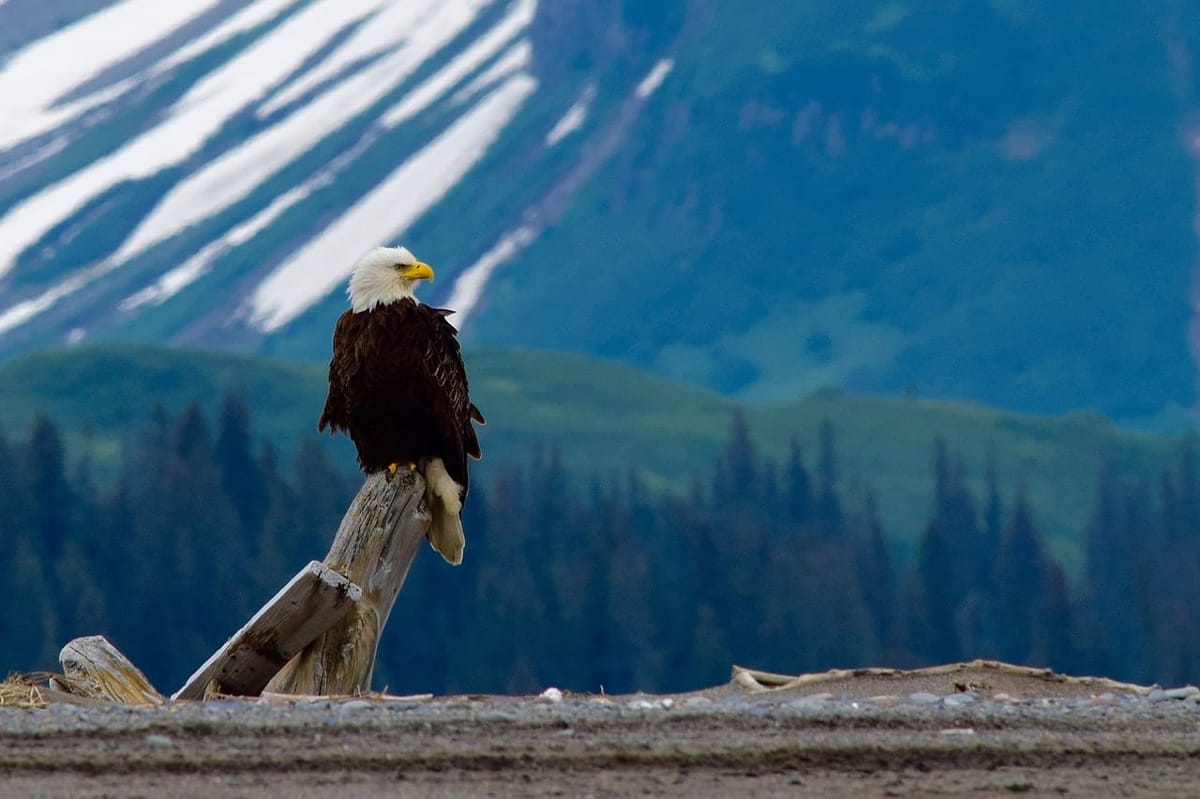
The Animals that call Banff National Park home attract nature enthusiasts and wildlife photographers from around the globe. In this article, we will explore the magnificent wildlife at Banff National Park, highlighting the park’s most iconic animals and offering tips on how to be responsible and stay safe when searching for animals while visiting the park.
Whether you're an avid birder, a casual nature lover, or a seasoned photographer, Banff provides an incredible opportunity to witness some of Canada’s most stunning wildlife in their natural habitat.
Bears 🐻
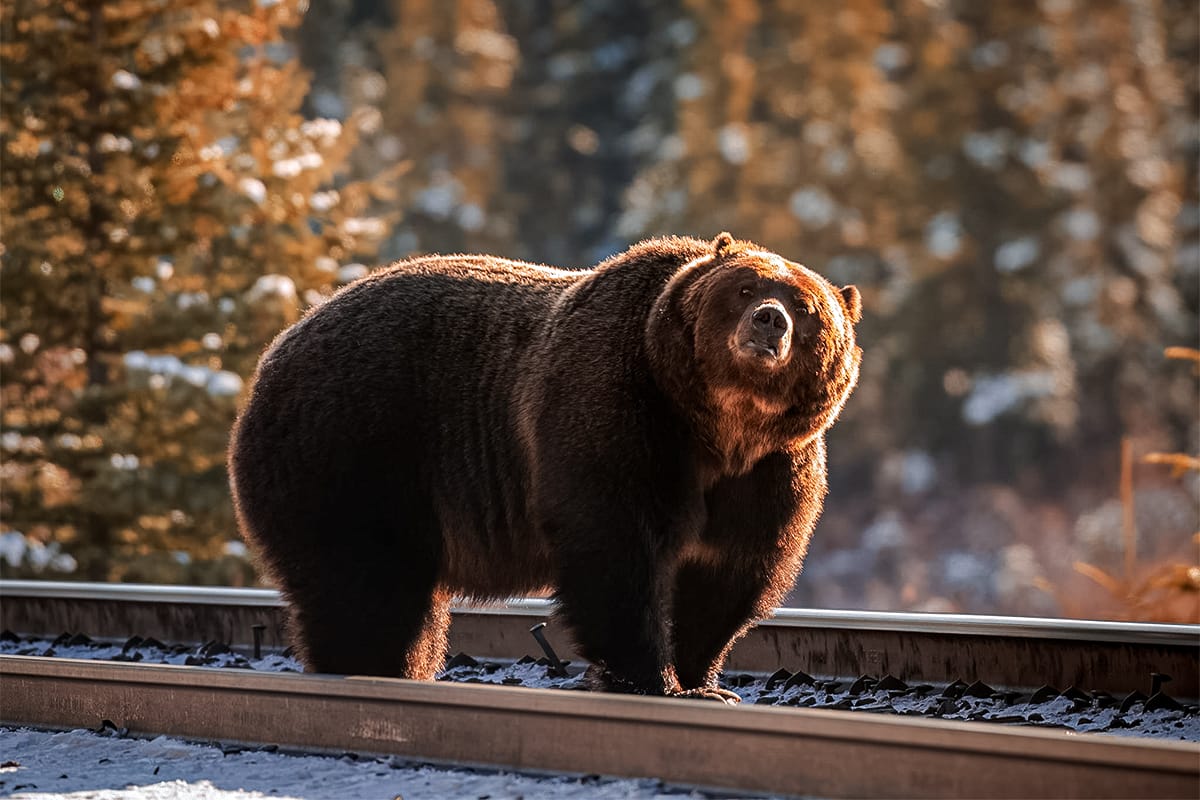
Banff National Park is renowned for its bear population, with both grizzly and black bears frequently spotted. Grizzlies, with their distinctive hump and massive size, are often seen foraging for food along riverbanks and in open meadows. Black bears, although smaller, are equally fascinating, usually found in forested areas.
Best Time To See Bears at Banff National Park
If you're aiming to catch sight of bears in Banff National Park, the prime viewing period spans from early April through November, when these magnificent creatures emerge from hibernation and are active in the area.
The Best Times for Bear Sightings
- Spring and Fall: These seasons, particularly May and June, offer excellent opportunities. During spring, as the snow recedes, bears descend to lower elevations to forage on fresh vegetation. Similarly, in the fall, they return to the valleys, preparing for the upcoming hibernation.
- Dawn and Dusk: Bears are most active during these times, making early morning and late evening the best moments for potential sightings.
Best Locations For Bear Sightings At Banff
- Bow Valley Parkway (Highway 1A): This scenic route is renowned for wildlife encounters, including bears. Latest news & breaking headlines
- Icefields Parkway (Highway 93-N): Another prime location where bear sightings are relatively common.
- Lake Louise Sightseeing Gondola: Offers a unique vantage point to observe grizzly bears in their natural habitat from above.
Safety Precautions For Bear Sighting At Banff
While the thrill of spotting a bear is undeniable, it's crucial to prioritize safety—for both you and the bears:
- Maintain Distance: Always keep a respectful distance from wildlife.
- Carry Bear Spray: Ensure it's easily accessible and familiarize yourself with its use.
- Stay Alert: Watch for signs of bear activity, such as tracks or scat.
- Travel in Groups: There's safety in numbers; consider exploring with companions.
Remember, while these guidelines can enhance your chances, bear sightings are never guaranteed. Patience and respect are key, as you can see from the video below. Stay out of their way, never approach and never leave food out. If fishing, be sure to clean your fish where you're fishing and not back at your camp.
Bear Get Too Close For Comfort Inside Banff National Park
Elk and Deer 🦌

Elk and deer are some of the most commonly seen mammals in Banff. Elk, known for their impressive antlers, can often be spotted grazing in open fields and meadows. Mule deer and white-tailed deer are also prevalent, usually found in the park’s forested regions.
If you're keen on observing elk and deer in Banff National Park, timing and location are key factors to enhance your experience.
Best Seasons for Sighting Deer & Elk At Banff 🦌
- Spring (May to June): As winter recedes, both elk and deer descend to lower elevations to graze on the fresh greenery in valley bottoms. This period offers excellent opportunities to observe these animals as they are more visible and active.
- Fall (September to mid-October): This season is particularly notable for the elk rut, the annual mating period. During the rut, bull elk exhibit fascinating behaviors such as bugling and sparring to establish dominance and attract females. While this is a captivating time to observe elk, it's crucial to maintain a safe distance, as males can be especially aggressive.
Optimal Times of Day To See Deer & Elk At Banff
Dawn and Dusk: Both elk and deer are crepuscular, meaning they are most active during the early morning and late evening hours. Planning your wildlife viewing excursions around these times can increase the likelihood of sightings.
Best Locations Spot Deer & Elk At Banff
- Banff Springs Golf Course: The loop road around the golf course is accessible to the public during the summer months and is renowned for frequent elk sightings, especially during the rutting season.
- Bow Valley Parkway (Highway 1A): This scenic route is a hotspot for various wildlife, including elk and deer. Early morning or late evening drives along this parkway can be particularly rewarding.
- Vermilion Lakes Drive: Located near the town of Banff, this area is known for regular deer and elk activity, offering accessible viewing opportunities.
Safety Considerations When Watching Elk
- Maintain Distance: Always keep a minimum of 30 meters (approximately 3 bus lengths) from elk. During the rutting season, males can be unpredictable and aggressive.
- Observe Behavior: Be attentive to signs of agitation, such as grinding teeth, curling back the lower lip, or laying ears back against the head. These behaviors indicate discomfort and a potential for aggression.
- Stay Alert: Female elk, particularly during calving season from mid-May to early July, can be protective and may act defensively if they perceive a threat to their young.
By aligning your visits with these optimal times and locations, and by adhering to safety guidelines, you can enhance your chances of experiencing these majestic creatures at Banff National Park.
Birds 🦅
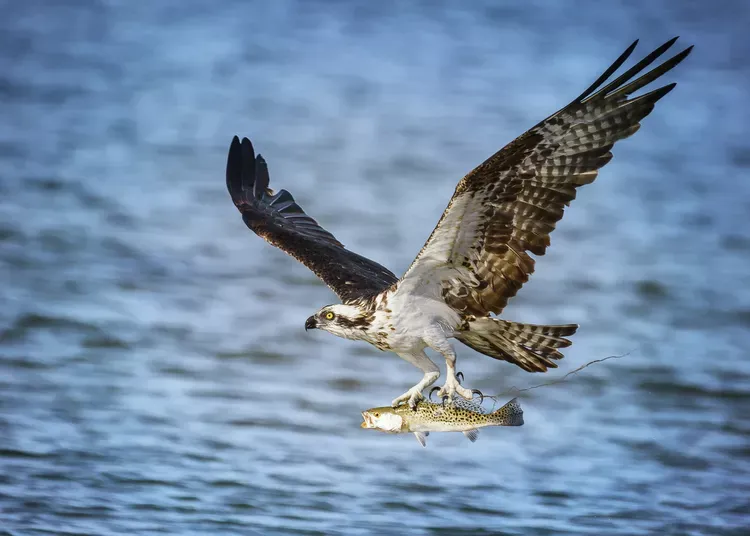
Bird watchers will find Banff National Park a paradise, particularly for spotting raptors like bald eagles and ospreys. These majestic birds of prey can be seen soaring over lakes and rivers, hunting for fish. Bald eagles, with their striking white heads and tails, are a sight to behold, while ospreys are known for their incredible fishing skills. The best viewing times are during the early morning or late afternoon.
The park is also home to a variety of songbirds, including the vibrant mountain bluebird and the melodious hermit thrush. These birds add a musical backdrop to the park's serene environment. Hiking trails like the Johnston Canyon and Lake Louise areas offer excellent opportunities for bird watching, especially during the spring migration season.
Best Time For Eagle Sightings At Banff National Park
The best time to see eagles in Banff — especially golden eagles — is during their spring and fall migration periods when they pass through the Rockies in huge numbers.
Want to spot them for sure? Plan a visit in late March or early October — and bring a pair of binoculars.
The Golden Eagle Migration
- Spring Migration: Mid-March to late April
Eagles move north from their wintering grounds, following the Rocky Mountain Front right through Banff and Canmore. Clear, sunny days with rising thermals are prime. - Fall Migration: Late September through October
During fall, golden eagles head south again. This is peak raptor-watching season, especially around Mount Lorette near Kananaskis, just southeast of Banff.
Where to See Eagles Around Banff
- Mount Norquay Viewpoint — Offers a good vantage over the Bow Valley where raptors ride thermals.
- Vermilion Lakes — Great for spotting bald eagles, especially if fish are active near the surface.
- Bow Valley Parkway — Keep your eyes peeled for eagles perched on tall snags or gliding over open meadows.
- Mount Lorette (Kananaskis) — This is one of the best spots in North America for eagle migration counts. Hundreds of golden eagles can pass by in a single day during peak migration. Bring binoculars!
What Types of Eagles You Might See
- Golden Eagles — More commonly seen during migration; they prefer open alpine and foothill regions.
- Bald Eagles — Often spotted near lakes and rivers year-round, especially where fish are abundant.
Full List Of Most Of The Animals Inside Banff
Large Mammals Inside Banff National Park
- Grizzly Bears — Usually seen from May to October at higher elevations.
- Black Bears — More common than grizzlies and often spotted along roadways in spring and summer.
- Elk (Wapiti) — Easily seen around Banff townsite, especially in spring and fall (rutting season).
- Moose — Rarer but sometimes spotted around marshy areas or near lakes like Waterfowl Lakes or Vermilion Lakes.
- Deer
- White-tailed Deer
- Mule Deer — Both are common and easy to see at dawn and dusk.
- Bighorn Sheep — Often seen on rocky slopes and along the Icefields Parkway.
- Mountain Goats — Look for them on cliff faces around places like Lake Louise or Mt. Norquay.
- Wolves — Rare and elusive but present throughout the park.
- Cougars (Mountain Lions) — Very rarely seen due to their secretive nature.
- Coyotes — Occasionally seen in open meadows or crossing roads.
Smaller Mammals Inside Banff National Park
- Foxes — Red foxes are occasionally spotted in the park.
- Lynx — Extremely rare and difficult to spot.
- Wolverines — Also rare, but Banff is part of their range.
- Beavers — Best seen in wetland areas or on quiet rivers, especially at dawn or dusk.
- Porcupines
- Snowshoe Hares
- Hoary Marmots — Often heard whistling in alpine areas.
- Columbian Ground Squirrels — Very common in summer.
- Pikas — Found in rocky alpine areas, often near talus slopes.
- American Marten
- Ermine (Short-tailed Weasel)
Birds Inside Banff National Park
- Bald Eagles
- Golden Eagles
- Ospreys
- Ravens
- Clark’s Nutcracker — Often seen at higher elevations.
- Canada Jays (Whiskey Jacks)
- Great Horned Owls
- Common Loons — Seen on lakes in summer.
- Spruce Grouse
- Ptarmigans — In alpine terrain.
Amphibians & Reptiles
- Western Toad
- Long-toed Salamander
- Garter Snakes — Rare but present.
Banff National Park offers an unparalleled glimpse into the beauty and diversity of nature. From majestic grizzly bears to soaring bald eagles, you will see many animals when visiting the park as it is a highly protected sanctuary for many species. By following safe and responsible viewing practices, visitors can enjoy and help preserve this incredible natural heritage.
Other Banff Post
